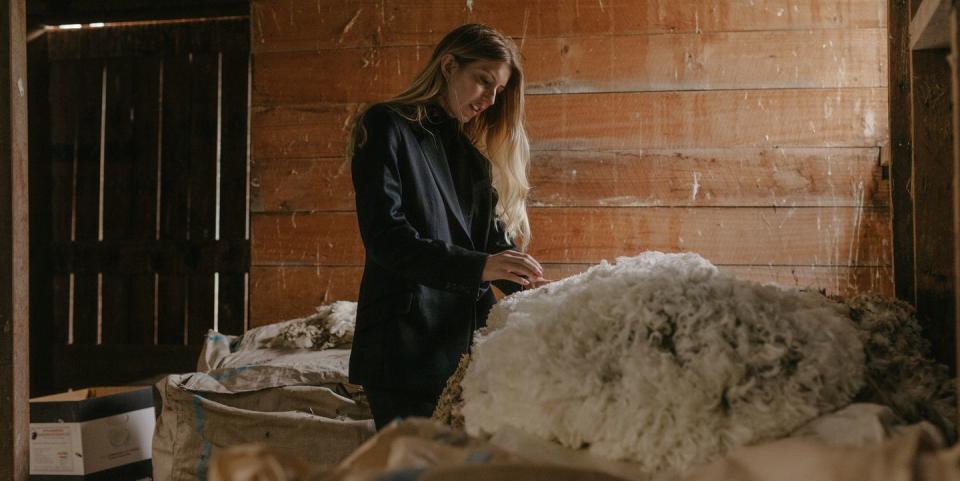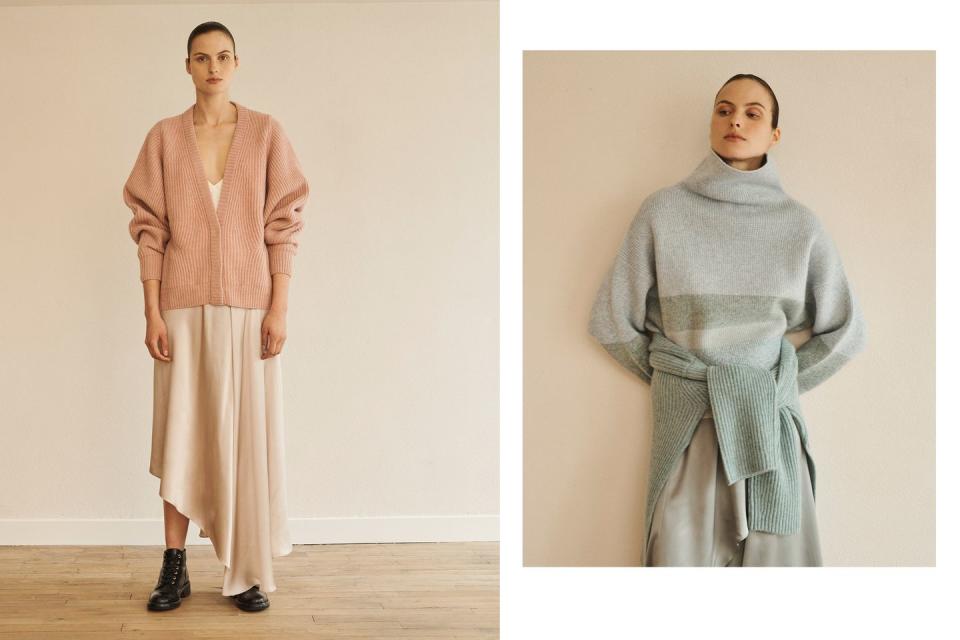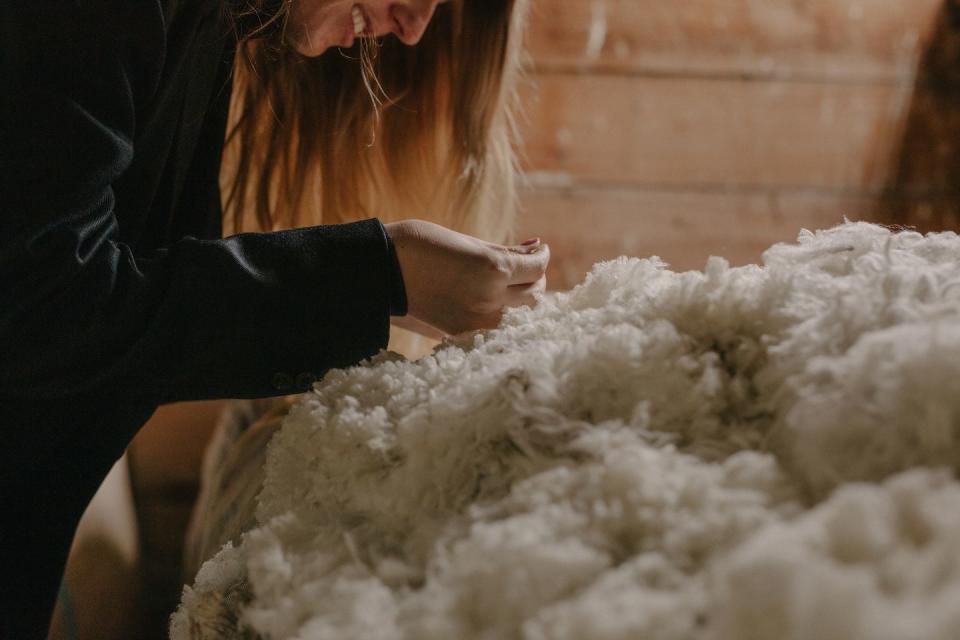Is cashmere bad for the planet?

We are entering a new age in fashion where, with every single purchase we make, we need to stand back and consider exactly what it is that we are buying and how it might impact our planet. In light of this, cashmere stands out as a bit of a contentious topic.
On one hand, cashmere is a natural fibre, so unlike polyester, nylon and other synthetics, there are no issues regarding its ability to decompose, but, as with all animal-derived products, the goats used in the production of cashmere produce a carbon footprint. Plus, when you look at the chain of production, it's not uncommon to see the destruction of natural habitats as a result of the ever-growing demand the cashmere industry is placing on our planet.
Management consulting company Bain & Company previously calculated that cashmere makes up $4 billion of the $60 billion luxury market, so there's no denying the demand for this sought-after luxury material. With this number only increasing, there is justified concern for how sustainable a material cashmere is. Here, we speak to three designers who are all finding a new approach to working with cashmere to help us better understand the viable future of this material.
What are the problems?
The main issue regarding the sustainability credentials of cashmere comes down to the democratisation of the fashion industry, which has impacted the cashmere market greatly, as the material has become accessible on all levels. Once a very expensive luxury commodity, you can now find cashmere on the high street and courtesy of fast-fashion brands, affordable to more consumers and mass produced for greater profits. Ultimately, this means that the demand for cashmere has grown to a point where it is no longer sustainable.
The crisis in cashmere was already being discussed over two decades ago (as detailed in this article by the New York Times) and with the rise in the number of fast-fashion brands using the material, this issue has steadily worsened. The increased grazing due to a rise in the number of goats needed to match the current demand leads to the eventual degradation of the grasslands.
In addition to this, cashmere is typically farmed and made in Mongolia and China, where the natural environments are suffering. According to the United Nations Development Programme, 90 per cent of Mongolia is fragile dry land and under increasing threat of desertification, while the temperatures in China are, like much of the world, getting more extreme. Therefore, the impact of climate change on the environments where the goats graze are already under threat, making it more difficult to produce cashmere, before you even consider the increased demand. In short, a more dramatic climate does not lend itself to cashmere production.

"With the climate issue we’ve got going on and such extreme weather, the goats are either in drought or are extremely cold as we take their incredibly warm fibres," Olivia Dowie, creative director of sustainable cashmere brand, Riley Studio explains. "The biggest issue is this destruction of their natural habitats that they live in. They don’t have enough grass to eat throughout the year and a lot of them are malnourished."

Are there more sustainable ways to produce cashmere?
The issues of demand are causing a number of brands to rethink the process and find a more sustainable approach to making cashmere. This includes label Le Kasha, which produces all of its pieces in just one factory, meaning its impact on the planet is minimised. The brand also works with farmers and herders to practise ‘sustainable grazing’ to ensure preservation of the land.
"I think it's better to keep the production in one place so you can control it and focus your efforts on it," explains creative director, Mali Marciano. "This also avoids large amounts of shipping which reduces harm to the environment. The increase in demand has led to cashmere being produced in non-specialist cashmere factories, which focus more on volume and less on the quality of the garment and the farmers who make it."
"The true quality cashmere producers tend to be factories that are totally vertical, processing, dyeing and spinning the cashmere fibre, then knitting garments, so the whole process of making a cashmere garment is totally in-house at every stage of production."
As well as keeping production as eco-friendly as possible, other brands are tackling the demand problem by using recycled materials instead of virgin cashmere.
Riley Studio uses ‘post-consumer’ cashmere, consisting of off-cuts, production pieces that have gone wrong, or gatherings from old cashmere jumpers from all over the world.
"We wanted to create as much as possible from waste materials and utilise whatever is on this planet before we turn to virgin or new materials," Dowie tells us.

Opting for a recycled cashmere brand is a great way to ensure your shopping isn’t contributing to pressures on the planet.
"By creating cashmere that’s the exact same quality as luxury cashmere, but not using virgin fibres, it gives a chance for the herds and farmers to have a bit of breathing space and not have to create cashmere in such huge quantities."
More generally, when shopping for cashmere, it's also important to take note of a brand’s accreditation to ensure animal welfare is respected. Le Kasha, for example, is ECO-certified, guaranteeing that all the goats used in their production processes are well treated.
"The goats are always fed on organic grain foodstuffs, and grazed on natural grasslands devoid of fertilisers or any other chemicals," Maricano tells us.
And, while change is slow, we are already seeing some major fashion brands, particularly on the high street, switching to these alternatives. Selected Whistles and Zara pieces use recycled cashmere and Asos banned cashmere from its website at the start of this year, so it is a step in the right direction. However, as Dowie warns, change does need to happen now.
"I think in time, people will start to take notice. Otherwise we won’t have any goats left to make the cashmere."
Could merino wool be a better alternative?
In a bid to lessen the pressure from cashmere production, some designers are turning to other materials, including merino wool, which gives a very similar end product to cashmere, but has a much greater yield.
"Merino is both more economical and environmentally friendly as, with cashmere, you would need four times more goats and in turn four times more land to produce the same yield," sustainable designer Maggie Marilyn says of why she opts for merino over cashmere.
A typical merino sheep produces enough for eight to 10 jumpers; in comparison it would take approximately three to five cashmere goats to create a single jumper.
"Our New Zealand merino is farmed in rangelands where the harsh climate means grazing is the only practical and economically viable use of land, therefore not displacing crop bearing topography," says Marilyn.
Merino is cashmere’s closest competitor in terms of weight and feel. Practically, it has great warmth to weight ratio, so it’s much finer, softer and lighter than regular wool as it naturally regulates your body temperature.
Is cashmere off the cards?
As with many of the issues surrounding sustainability, the answer here is not black and white. While merino wool is undeniably more sustainable than cashmere in terms of going further, that doesn’t mean that cashmere is a completely unsustainable option – there are ways to make it work.
We recommend looking into recycled cashmere alternatives or vintage options that encourage circular fashion. Alternatively, choose pieces from brands that minimise waste, the damage to goats and their environment - those with the right credentials, who are prioritising the planet over profits.
As with all purchases, do your brand research to ensure you are making informed choices. The most important thing you can do is find out who you are giving your money to, and then decide if it's something you want to support.
Like this article? Sign up to our new newsletter to get more articles like this delivered straight to your inbox.
You Might Also Like

